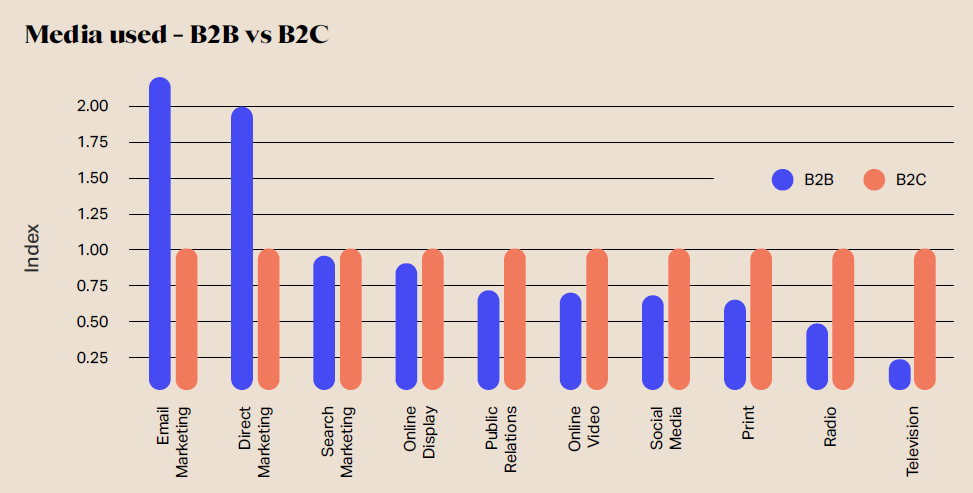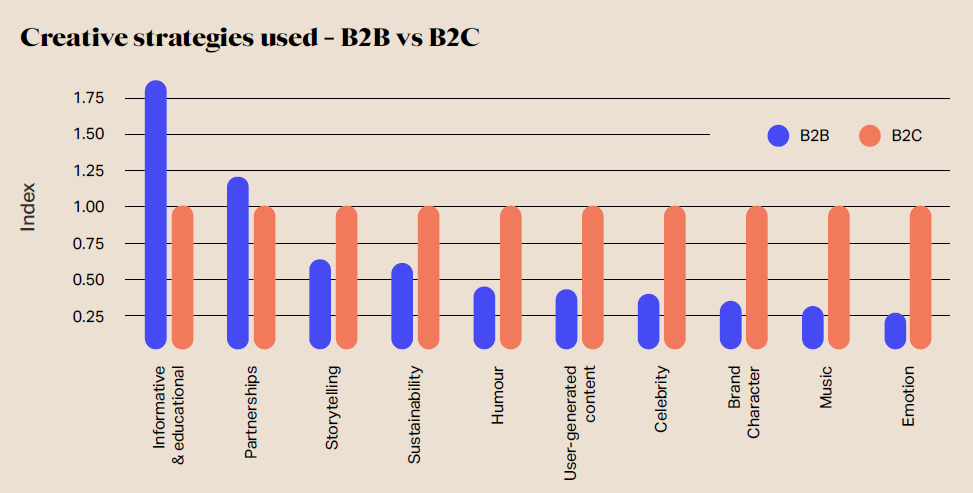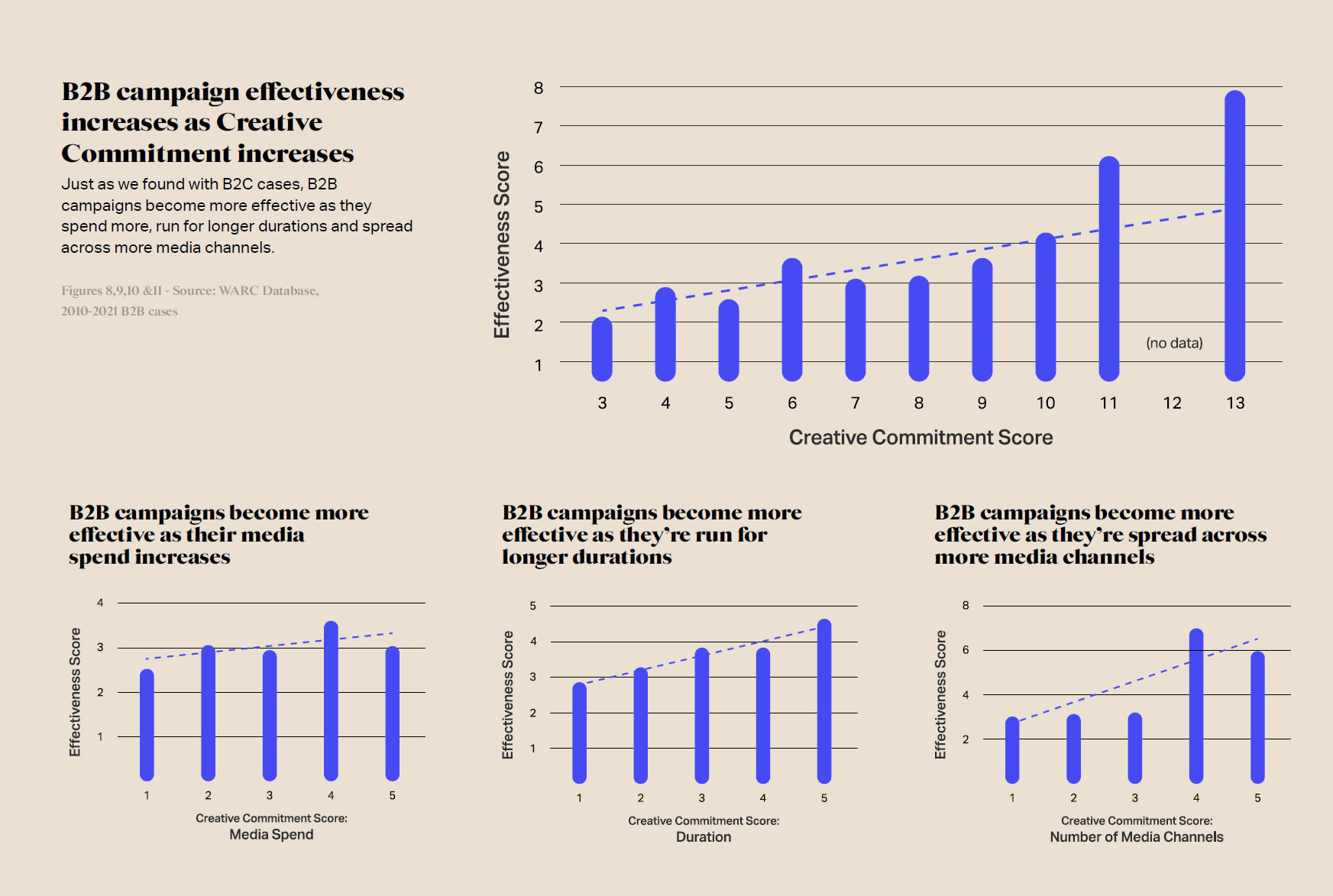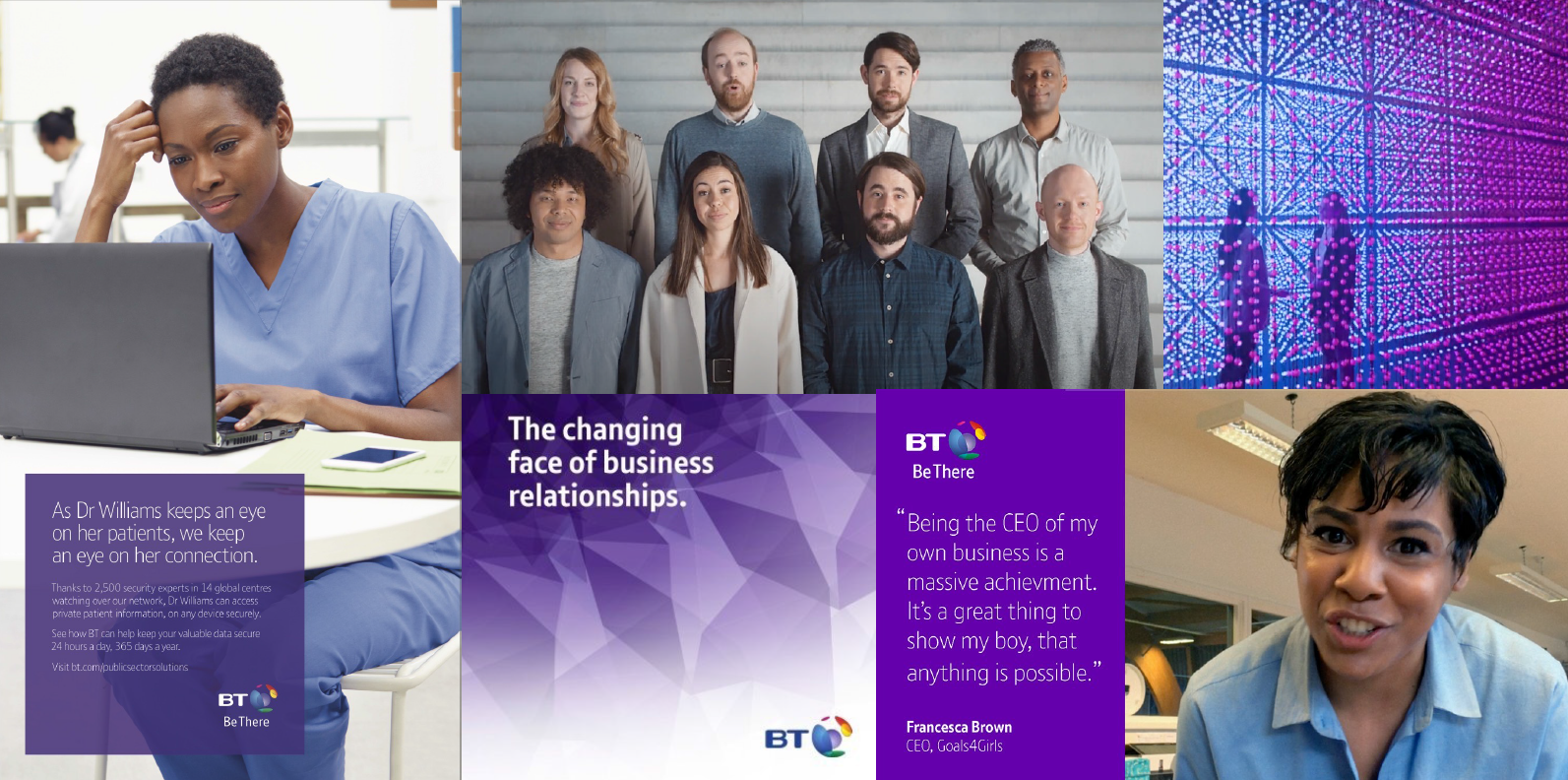




What makes for truly effective B2B marketing? Well, according to The B2B Institute at LinkedIn, WARC, and Lions, it’s:
And perhaps not that surprisingly if you’ve ever read a corporate release: more emotion.
Having looked at 10 years’ worth of B2B marketing campaigns, the WARC think tank concludes that B2B marketing needs to get its creative on (and about time too!). The assumption that B2B brand engagement thrives on short, penny-pinching stints on a single platform is clearly wrong, yet it remains the go-to approach for many B2B marketers.
Over the past decade, marketers have been held back by an addiction to “short-term, rational and tightly targeted campaigns” (read: dry and unambitious). An addiction that has stunted the growth of the entire B2B industry.
If B2B brands want to flourish, they need to treat long-term brand building for prospective markets as a critical slice of their strategic pie. The method must be growth-oriented, memorable, and creative.
Let’s not sugar coat it, B2B is boring
“As long as any of us can remember, B2B has been the domain of hyper-rational advertising that’s treated its audience as emotionless robots,” writes marketing effectiveness expert James Hurman in his foreword to The B2B Effectiveness Code, which assessed the success of 435 B2B campaigns launched between 2010 and 2021.
For too long, organisations have tended to approach B2B marketing with the same enthusiasm they have for a visit to the dentist. Painful but necessary. B2B marketing teams are often subordinate to larger sales teams within a company, meaning campaigns are principally subject to the urgent, quantitative demands of sales targets.
Impact is measured by KPIs smashed rather than relationships gently nurtured. It’s a faceless corporation going up against another faceless corporation, in a battle where an overworked C-suite exec will sign off on the more profit-saving product first.
The struggle for B2B Creative Commitment
Compared with B2C, the go-to-media in B2B are email marketing and direct messaging, which enable tight targeting to drive short-term sales. B2B marketers are far less likely to use TV, radio, outdoor, or print, the study reports.
They are also more likely to create rational and informational advertising. Again, this is an approach geared towards short-term effects with an audience already interested in the brand or its products.
B2B marketers are far less likely to use emotion, humour, and storytelling — those creative strategies that generate brand-building impact.

But if B2B marketers want to grow their brands and businesses in the long-term, they need to change tactics.
Enter the B2B Creative Commitment — a tangible, composite measure of the media budget, duration, and number of media channels applied to a creative campaign or initiative.
The study reports that B2B campaigns become more effective when more money is spent, they run for longer, and are spread across a wider range of channels and platforms.

If marketers want to maximise the effectiveness of their B2B campaigns, they should be working to maximise their Creative Commitment. In other words, producing larger, longer-term, and more broadly targeted campaigns.

Time to put feelings first
Traditionally B2B marketers have considered intellectual persuasion — like thought-leadership and case studies — the best approach to winning over customers. Engaging emotionally was left to those sensitive souls over in the B2C brand space. You know, the people who love to create ads that make their customers cry (we’re looking at you, John Lewis).
But the findings from this study show that successful B2B campaigns are those that follow the same principles as successful B2C ones — considering customers as real people, for whom emotional connection and long-term brand loyalty are equally as important.
“Customers are more likely to think well of brands that they feel emotionally close to, and emotional campaigning is one of the best ways to build this connection at scale,” say the authors.
This is backed up by broader targeting that reinforces the social capital of a consumer’s emotional investment by creating a sense that your brand is big and familiar enough to be properly trustworthy.
B2B marketers, then, must deal with their phobia of emotional brand-building across wider audiences if they want to grow their brands effectively.
Brands like Mailchimp, Slack, and Zendesk are cited as examples of B2B marketing excellence, with their human and brand-led approach. But what about the corporate giants who are so used to avoiding icky feelings?
The study uses BT UK as an example of the power of emotion in business.
BT produced six online films over three years that aimed to celebrate human connections, and the idea that better relationships lead to better business. Through the campaign, the brand achieved significant uplifts in trust, leadership, value for money, affinity, and uniqueness.
The work generated a net profit of more than £14.5m and delivered a £3.16 return for every £1 spent.

There’s a big opportunity for organisations to leverage emotionally-driven brand campaigns, not least because they haven’t been properly leveraged up till now.
Those organisations that take this approach will be able to explore unchartered possibilities for their business and get ahead of competitors too hesitant to play in the brand-building space.
Our top three takeaways from the study for B2B marketers
Clearly, B2B marketing needs to evolve if it is to generate best-in-class business results.
From the advice laid out by the LinkedIn B2B Institute, we recommend focusing on these areas:
Where do I go next?
The publishing of this study marks an important turning point for the B2B marketing and PR industry — what the authors of the study have called a “brand-led revolution” — that will offer transformative results for those organisations ready to take the leap.
We’re excited to see how brands will begin to shift into emotive brand-building, especially as we continue to face economic and socio-political challenges post-pandemic.
Interested in exploring brand-building projects? Explore our case study or get in touch to find out how we can lead you to better B2B effectiveness.
You can read the full report here.
To initiate the download of this awesome content, please just tell us a little about yourself.
We want to make sure we are delivering the right information to the right people. In return, we promise never to:
For more information about how we handle your data and protect your information, please visit our Privacy Policy